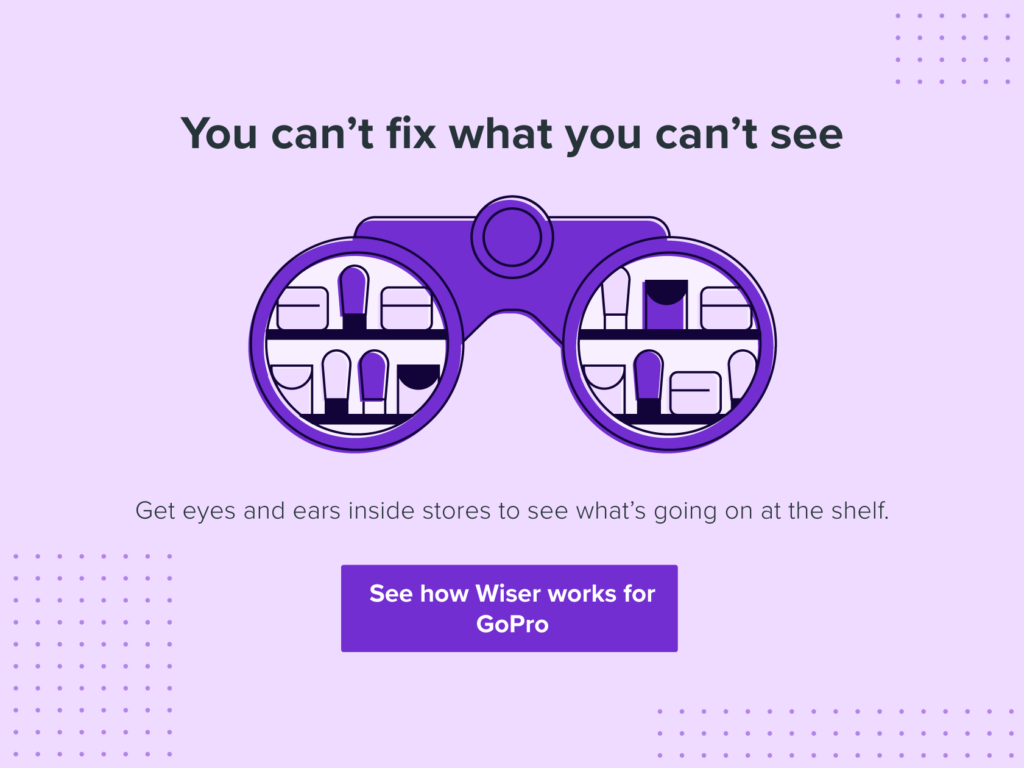Do you know what’s going on with your brand inside every store you’re in? Alright, in fairness that’s a tough question for anyone. How about this—do you know what’s going in inside the stores that have the biggest impact on sales and revenue? Can you prioritize your efforts where it matters most?
The answer to these questions is easier with a few datasets that you should have at your fingertips. However, that’s easier said than done. Here are five things you should know about your store presence—but are probably missing.
Where You Are in Each Store
This is not something that many brands think about, yet it has a major impact on sales. Say you are a natural food brand. A region of stores may be placing you in the protein aisle instead of with other natural foods. This could be bad because a) your shoppers might not be able to find you if you are not where they expect, or b) your price point might be much higher than the other proteins, instead of fitting in with the natural product prices.
Also, sometimes you might be in the correct section, but your setup still might not be ideal. If you are paying to be in the front of the store, just being there isn’t good enough if the shoppers never see you when they enter.
With how expensive and cumbersome it is to gather any sort of store-level data at scale, you probably are only getting the most vital pieces of information from a small subset of stores.
Back vs. Front
Stores have also become delivery hubs as BOPIS has taken off. This has accelerated during the pandemic as curbside pickups became normal. Your inventory system may say that your items are in stock at a specific retailer—but are they on the shelf or just in stock for online orders? Stock availability and shelf availability are two different things, and simply delivering the products to the stores is not enough.
Shelf Space
Similarly, on-shelf availability might have different meanings from store to store. Shelves are restocked daily in many stores and there are many members in your category trying to break through. When you launch a new product or planogram with a retailer, you might have 12 pegs or 40 percent of a shelf. Over time, as products and retail employees come and go, your shelf space might erode to eight or six or even zero.
While you might find out if it does ever get to zero, you might not hear about it if it goes from 12 to three. That might not get noticed, but that decrease could have a 25 percent impact on your sales. Especially if those pegs go to a competitor, or if it helps someone new steal market share.
Adjacencies
If you work with Costco, you know they have a regional model. Local brands can be different from region to region. If you have a national distribution, that means your adjacent competition may be different from region to region. This is true of many other retailers as well.
How would you change your marketing tactics if you were near a health-conscious brand in the Southwest but a sustainable brand in the Northeast? Would you adjust your price points if you were near low-cost brands in the Midwest and premium brands in the Southeast?
Competitive Promotions
Lastly, it’s very important to track what your competitors are doing. What are they doing for back to school? Are they running any promotions? Have they launched any new products? How is this different from store to store? This information would help you adjust while these strategies are taking place rather than waiting until after the sales numbers come in.
Conclusion
There are a lot of other things not mentioned here, such as shopper sentiment, associate interactions, price compliance, and more. The point is, with how expensive and cumbersome it is to gather any sort of store-level data at scale, you probably are only getting the most vital pieces of information from a small subset of stores.
Most of these conditions don’t happen on purpose, or because of neglect from the retailers. They are managing millions of products across thousands of stores. It is up to you, the brands, to make sure that everything is happening according to your plans.















